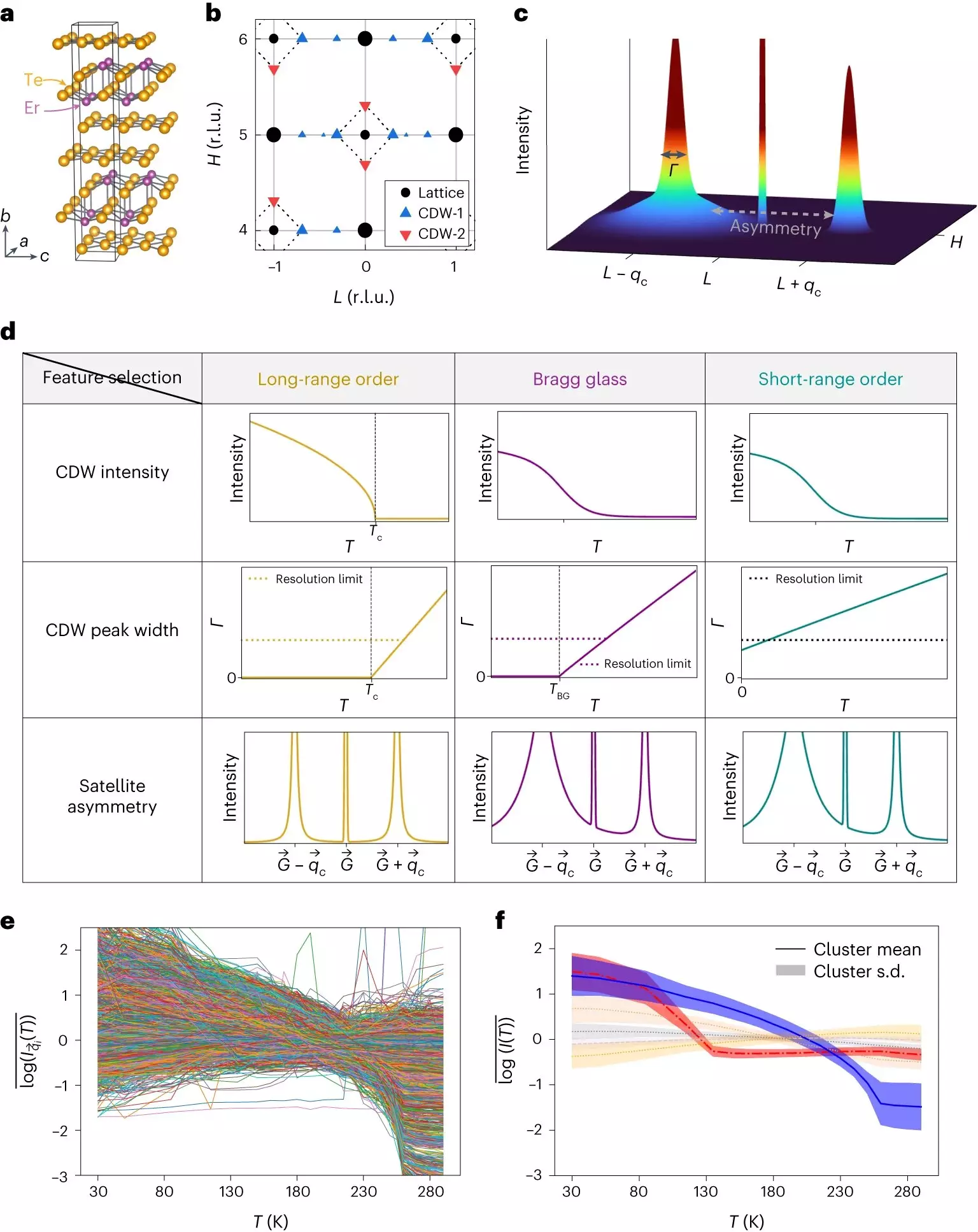Cornell University quantum researchers have made a groundbreaking discovery in the field of physics. Using large volumes of X-ray data and a revolutionary machine learning data analysis tool, they were able to detect a phase of matter known as the Bragg glass phase. This discovery settles a long-standing question regarding the existence of this almost-ordered state in real materials. The paper, titled “Bragg glass signatures in PdxErTe3 with X-ray diffraction Temperature Clustering (X-TEC),” was published in Nature Physics. This article will provide an in-depth analysis of the research conducted by the Cornell researchers and the implications it has for our understanding of matter.
The Bragg glass phase has been a subject of theoretical interest for over three decades. It is characterized by a slow decay of charge density wave (CDW) correlation, which only vanishes at infinite distances. However, experimental evidence to confirm the existence of this phase has been lacking. One of the main challenges in detecting the Bragg glass phase is distinguishing it from other phases, such as long-range order and the disordered state, in experimental data. Researchers face the additional obstacles of noise and limitations in the resolution of experimental setups.
The Cornell researchers managed to overcome these challenges by combining materials, data, and machine learning tools. To study the Bragg glass phase, they identified a family of CDW materials known as PdxErTe3. These materials allowed for a systematic study with controlled variables. The researchers then took extensive amounts of X-ray data at Argonne National Laboratory, collaborating with scientists there. This large dataset formed the basis of their analysis. Finally, they used a novel machine learning data analysis tool called X-ray Temperature Clustering (X-TEC) to analyze the massive volume of data in a scalable and automated manner.
A New Mode of Research
The significance of this research goes beyond the detection of the Bragg glass phase. It represents a new mode of research in the era of large data and machine learning. By harnessing the power of machine learning tools and data-scientific perspectives, scientists can tackle challenging questions and identify subtle signatures through comprehensive data analysis. This mode of research has the potential to revolutionize our understanding of complex systems and phenomena.
The detection of the Bragg glass order and the resulting phase diagram have significantly advanced our understanding of the interplay between disorder and fluctuations in matter. This breakthrough opens up new possibilities for studying and manipulating fluctuations in scattering experiments. The researchers used X-TEC to target fluctuations through a measure of “peak spread.” This high-throughput approach to studying fluctuations can provide invaluable insights into the behavior of complex systems.
The use of machine learning in the field of quantum physics has yielded remarkable results. Cornell University researchers have successfully detected the elusive Bragg glass phase using large volumes of X-ray data and the innovative data analysis tool, X-TEC. This discovery not only confirms the existence of the Bragg glass phase but also showcases the potential of machine learning in revolutionizing scientific research. The implications of this breakthrough extend beyond the realm of quantum physics and can pave the way for new discoveries in various fields of study.


Leave a Reply